14. John Wick (2014)
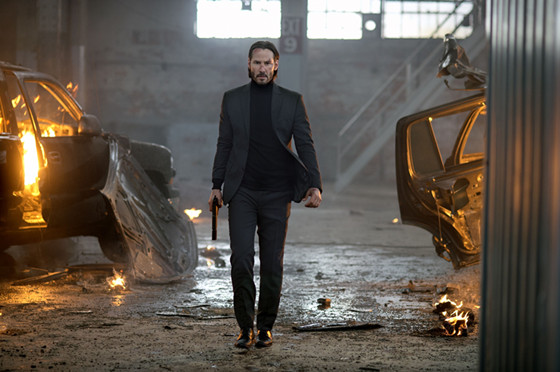
In years to come, John Wick will be better remembered as the action classic that it is. Unfortunately, it has only been 3 years since the film was released but time will most likely be kind to John Wick. What separates John Wick from many other Hollywood action films is the hard work put into the actions scenes. Directors Chad Stahelski and David Leitch are both former stuntmen and stunt coordinators. They clearly do not accept anything fake or substandard.
Utilising a mixture of Gun Fu, Jujutsu and Brazilian Jiu-Jitsu, Keanu Reeves tears up the screen as the titular assassins. Stahelski and Leitch will not grant Reeves a easy ride through fast edits and tight camera shots. They want to see him fight. Audiences can expect plenty of great action scenes but the one that stands out is the gunfight at The Red Circle.
The nightclub gunfight has been done before but Stahelski, Leith and Reeves bring a new style to the table. An explosion of colours, lights, music and blood. Sure it is way outside the typical action mold of realistic gunfights, but audiences do not watch movies like John Wick for realism.
With the sequel about to be released, one can only wonder how the filmmakers will top the original. However, regardless of the sequel’s quality, the original Red Circle gunfight will go down as one of the great contemporary cinematic gun battles.
13. Tombstone (1993)
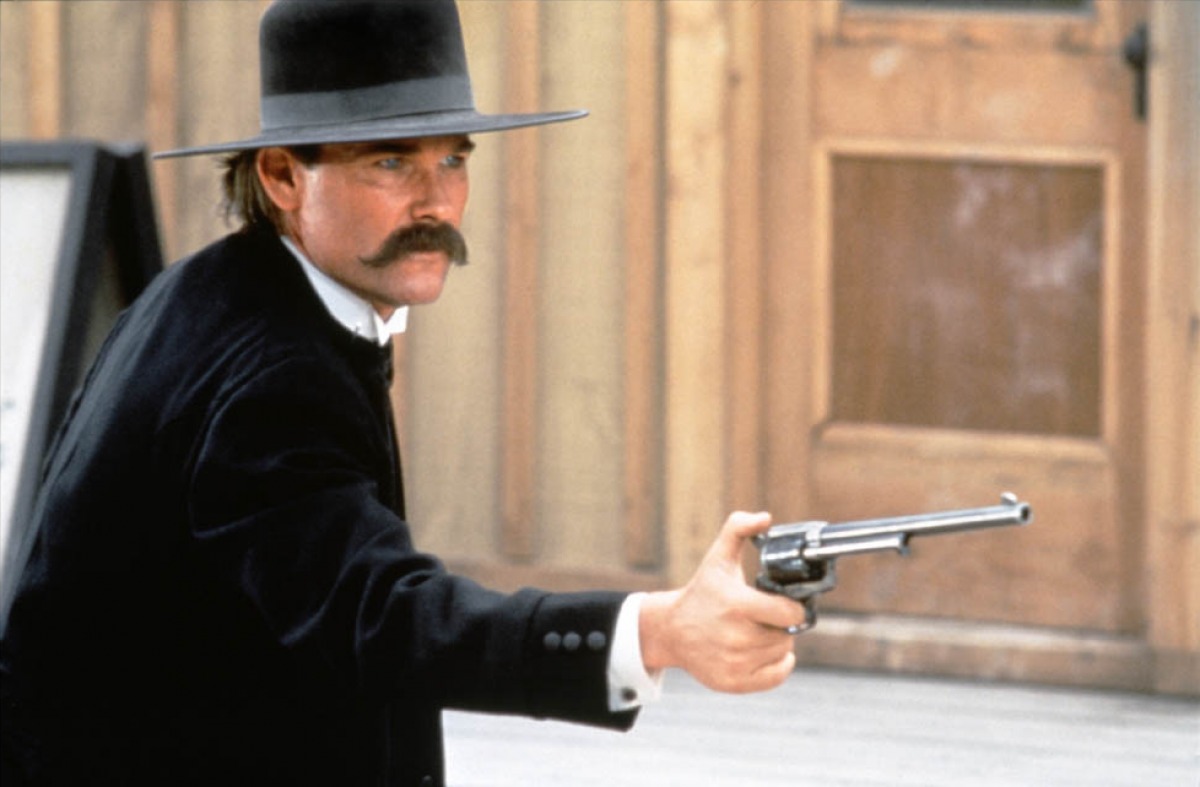
The most memorable and iconic gunfight in history only lasted 30 seconds. It took only half a minute for the Earp brothers, Wyatt, Virgil and Morgan, along with Doc Holliday to gun down the McLaury brothers and Billy Clanton. Despite accusations of premeditated murder, the Gunfight at the O.K. Corral has defined the American Old West, depicted in many forms including several films.
However, one films stands out not just for its brutality but its historically accurate depiction. While many other films took artistic liberty with the gunfight, extending the length and changing the geography, director George P. Cosmatos stays faithful to history. The line between self-defence and provocation is quite hazy at best. Still, Cosmatos plays homage to the many tropes of the Western gunfight including a Mexican stand off, quick draws and gazing eyes.
Tombstone proved that you do not need a big budget to create a memorable gunfight. Kevin Costner’s Wyatt Earp, made with double the budget, failed to hit the same high note as Tombstone.
12. A Bittersweet Life (2005)
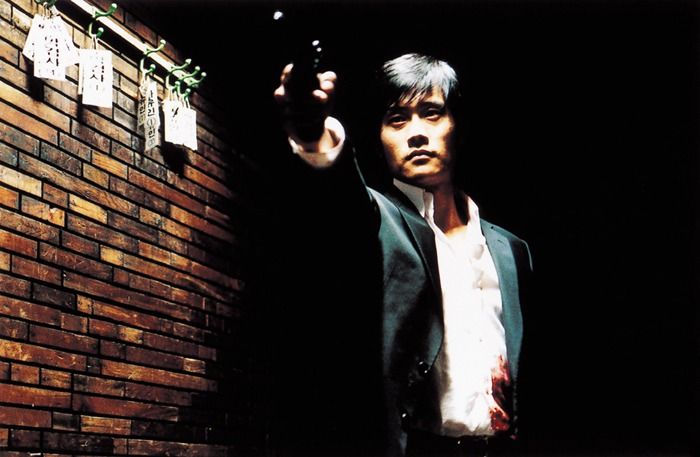
South Korean cinema is currently going through a renaissance, one that has seen some of the best genre films produced outside of Hollywood, in particular the revenge genre. While some redefined neo-noir (Old Boy), splatter horror (I Saw the Devil) and spy thrillers (The Man From Nowhere), A Bittersweet Life took on the gangster drama, delivering a stunning gun battle within a high-rise boutique bar.
Lee Byung-hun may be recognised within the Western world for his roles in G.I. Joe, Terminator Genisys and The Magnificent Seven but none of these compete with his original Korean work, especially as the mob enforcer Kim Sun-woo. Given the task of watching over his boss’s mistress, Kim discovers she is having an affair. His decision to lie for her ultimately leads to his downfall, but not without a fight. Betrayed and left for dead, Kim confronts his boss, triggering a chaotic gunfight.
Director Kim Jee-woon crafts this action set piece like a painting. Strong reds and golds define the scene just as all hell breaks loose. Despite the chaos, the director manages to contain it all for the camera. Blood splatters, exploding lights and water blasts work like an old John Woo film. But as the music kicks in and our hero is slowly torn down by the enemy, we know there is little chance of salvation. We just hope that he takes down everyone with him. A true revenge flick.
11. Unforgiven (1992)
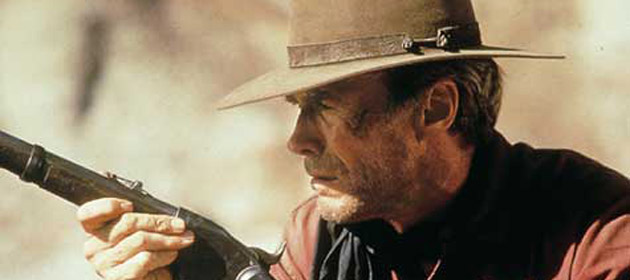
Clint Eastwood’s classic anti-western stands as a piece of filmmaking that denounces the very violence that made the genre so popular. Death is not an easy route for anyone in this film. Characters die slow and painful death and those that pull the triggers are left with the emotional scars of their sins. Quite a bizarre choice for a man best known for playing the iconic Man with No Name.
Unforgiven stands as one of the greatest Westerns ever made. A film that does not mince words. There are no ‘gunslingers’ or ‘bounty hunters’ in this world. Only assassins. Romanticism is riding off into the sunset here. Assassin is a perfect title for the likes of William Munny, a reformed killer and widower gone straight to raise his children. Initially hesitant, he is coaxed back into the world of killers, sick of being a pig farmer and convincing himself it’s for a worthy cause.
In the end, Munny drops the delusion of a noble bounty. He is a killer. Seen first hand as he walks into Skinny Dubois’ bar, a force of nature brought in with a clap of thunder. Avenging the death of close friend Ned, he proceeds to gun down the men responsible, starting with Dubois.
When branded a coward for shooting an unarmed man, his response, “He should have armed himself if he was going to decorate his saloon with my friend”. Unforgiven’s final shootout is not memorable because of its intensity, but its brutality. This is a man embracing his identity as a murderer.
10. The Terminator (1984)
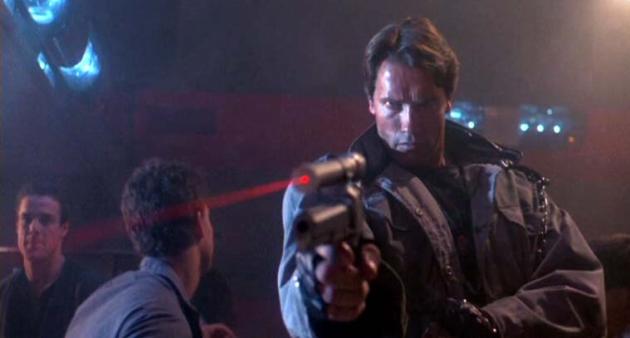
This is not a gunfight as much as it is a massacre. What else would you call a police station up against the unstoppable force that is The Terminator? When a scene starts with the iconic, “I’ll be back,” the follow up had better be good. Fortunately, with James Cameron behind the camera, what follows is Arnie going akimbo with a shotgun and assault rifle, gunning down anyone between him and Sarah Connor.
With Sarah trapped in a office and Kyle Reese still handcuffed in the interrogation room, it is only a matter of time until The Terminator finds them. What defines this scene is the hopelessness of the situation. The police officers, with no chance against the killer roaming the hallways, can only delay him and buy Reece enough time to escape from lockup and rescue Sarah.
Another example of an immortal figure in a gunfight. We know that police weapons are not going to stop the Terminator so how does Cameron raise the stakes? He reminds the audience of the impending danger heading towards Sarah. Young and naive, she trusts the police when they tell her to hide in the office, only to be rescued by Reese at the last possible moment.
9. Once Upon a Time in the West (1968)
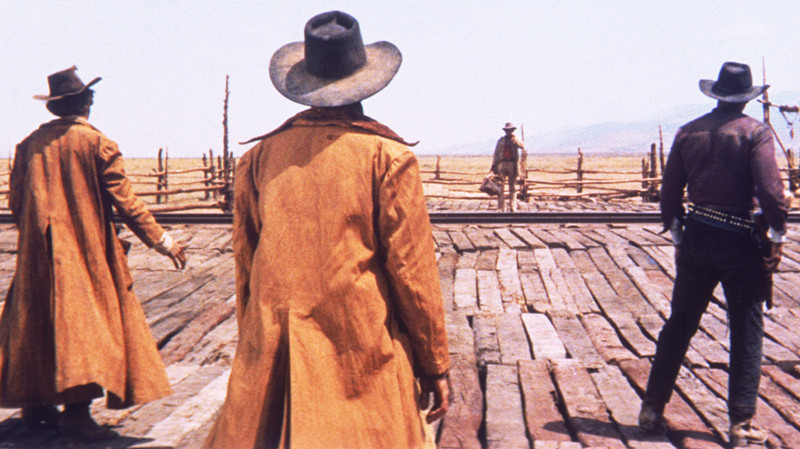
Half of this list could be made up of gunfights from Sergio Leone fights. The graveyard fight from The Good, The Bad and The Ugly, the final showdown in A Few More Dollars and even the final showdown in this film between Henry Fonda and Charles Bronson. Director Sergio Leone’s attention to detail combined with Ennio Morricone’s masterful scores crafted some of the greatest action scenes in history, scenes that stand even to this day.
However, in terms of pure film craft, Leone’s greatest remains the opening scene from Once Upon a Time in the West. Leone feeds us only small details. Three men wait at a train station. Two stand at opposite ends, tense and on edge. The third sits under the shade, trapping a fly in the barrel of his gun. The three are assassins, waiting for the arrival of Harmonica, a lone gunslinger with one hell of an entrance: the haunting tune of his harmonica.
For a scene that goes for nearly 10 minutes, the fight only lasts 10 seconds. But that is what makes this scene so great. Leone’s work is a master class on building tension. The audience knows nothing as the train pulls in. Piece by piece, we receive more information and before we know it, bullets are flying. It is the build-up to the gunfight that makes this scene so spectacular.
8. The Untouchables (1987)
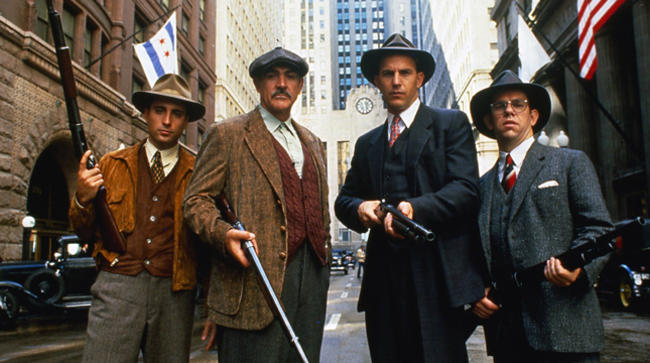
Action is tough, but being able to shoot an action scene that pays homage to Battleship Potemkin is pretty impressive. That is exactly what Brian De Palma has achieved with his second act gunfight set inside Chicago’s Union Station.
De Palma perfectly sets the scene up. Treasury Officers Elliot Ness and George Stone prepare to pounce on Al Capone’s bookkeeper, Payne, protected by various henchman. The problem: numerous civilians can be caught in the crossfire, including a young women pushing a baby carriage. An attempt by Ness to remove the woman from harm’s way leads to him being recognised and triggering a gunfight.
De Palma crafts the gun battle perfectly. Geography is quickly established, tension is built and the stakes are constantly raised. With Ness focused on the various gunmen and Stone struggling to maintain cover, both are oblivious to the baby carriage which is rolling down the stairs. Civilians are shot down in a bloody fashion but De Palma’s glance remains focused on the carriage, moving in slow motion, as Ness and Stone scramble to avoid the inevitable.
De Palma’s slow motion carnage is clearly indicative of the works of Peckinpah and Woo, yet his focus on the carriage gives the scene a unique perspective.